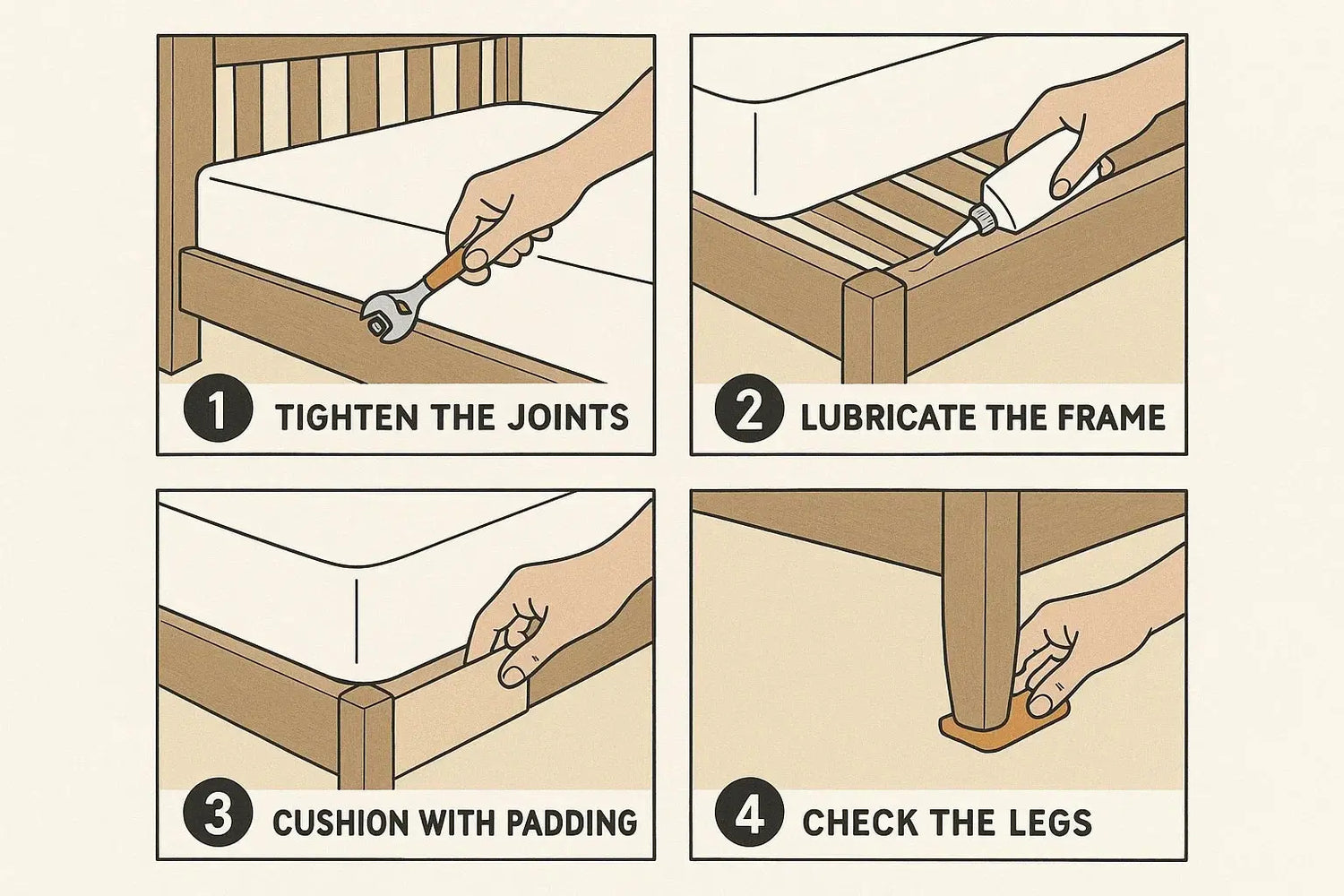
A squeaky bed can be a major annoyance, especially when trying to get a good night's sleep. The constant creaks and groans disrupt your peace, making it difficult to relax. Fortunately, fixing a squeaky bed doesn't have to be a difficult or expensive task. With a few simple steps, you can get your bed back to being quiet and comfortable. Here's a guide to help you fix a squeaky bed.
1. Identify the Source of the Noise
Before you can fix the squeak, it’s important to pinpoint where the sound is coming from. Here are the most common sources of squeaky noises:
- Bed frame: The joints or metal parts of the bed frame may loosen over time, leading to squeaks.
- Mattress: Sometimes, the mattress itself can be the source of the noise, especially if it's old or if there are uneven spots where the springs rub.
- Slats or Box Spring: If you have slats or a box spring, these can become loose or worn, causing squeaky sounds when pressure is applied.
Tip: Have someone help you by pressing down on the bed while you listen closely. This will help you determine exactly where the noise is coming from.

2. Tighten Loose Screws and Bolts
The most common cause of squeaky beds is loose or wobbly parts in the frame. Over time, screws, bolts, or other fasteners may become loose due to constant use. Here’s what you can do:
- Tighten all screws and bolts: Using a wrench or screwdriver, go over all the screws, bolts, and nuts on your bed frame. Make sure everything is tightly secured.
- Check the joints: If the frame has wooden joints, ensure they are securely fitted. If any are loose, you may need to glue or reassemble them.
Tip: Periodically check the bed frame every few months to prevent squeaks from returning.
3. Lubricate the Frame
If tightening doesn’t solve the problem, try lubricating the moving parts. This can help reduce friction, which is often the cause of squeaks.
- Use WD-40 or a silicone-based spray: Apply a small amount of lubricant to the joints, springs, and metal parts that come in contact with each other.
- Apply furniture wax for wooden frames: For wooden bed frames, rub some furniture wax into the joints to reduce friction.
Tip: Avoid using excessive lubricant. Just a small amount should do the trick.
4. Add Padding to the Slats or Box Spring
If the squeak is coming from the slats or box spring, adding extra padding can help reduce the sound.
- Place fabric between the slats and mattress: Lay a soft cloth or towel between the slats and the mattress to reduce friction.
- Use a foam pad: If you have a box spring, place a thin foam pad or mattress pad between the box spring and the bed frame. This can help reduce squeaks caused by pressure and movement.
5. Flip or Rotate the Mattress
Sometimes, the squeak can come from the mattress itself, especially if it's old or worn unevenly. Flip or rotate your mattress to help even out the pressure distribution. This may reduce any noise caused by uneven springs or foam areas that have become compressed.
Tip: Follow the manufacturer’s instructions for rotating or flipping the mattress to ensure proper care.
6. Check the Floor
A squeaky bed could also be the result of the floor beneath it. If your bed frame is sitting on a soft or uneven surface, it can cause squeaks.
- Place felt pads or furniture coasters under the legs of the bed: This will help cushion the pressure and reduce squeaking caused by the bed rubbing against the floor.
- Use a level: Ensure the bed frame is placed on a level surface to prevent movement and squeaks.
7. Replace Worn-Out Parts
If you've tried all of the above methods and your bed still squeaks, it may be time to replace worn-out parts. For instance:
- Replace old slats or springs: Over time, wooden slats can crack, and springs can lose their tension. Replacing these parts can help eliminate the squeak.
- Consider a new mattress: If your mattress is old and sagging, it may be time for an upgrade. A new mattress with a firm base can help reduce noise and improve your sleep quality.
Tip: When shopping for a new mattress, look for options with motion isolation features, like Anmiz-Y™ or MotionGuard™ technology, to reduce noise and enhance sleep quality Luna-Lumbar Zone™ MotionGuard™.
Conclusion
A squeaky bed can be a simple fix with a little time and effort. Start by identifying the source of the noise, tightening screws, and applying lubrication. Adding padding and checking the floor can also help reduce squeaks. If all else fails, replacing worn-out parts or upgrading to a new mattress might be the best solution for a quiet and restful sleep.




